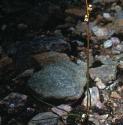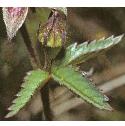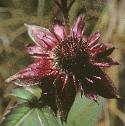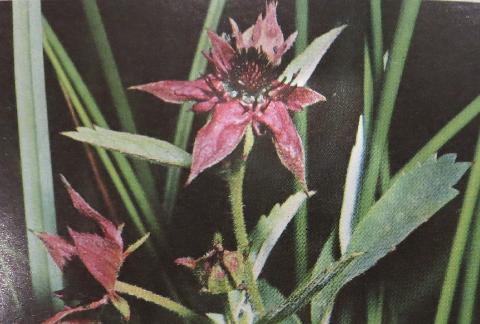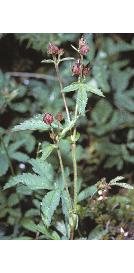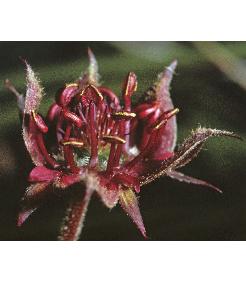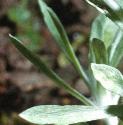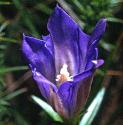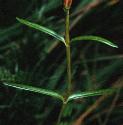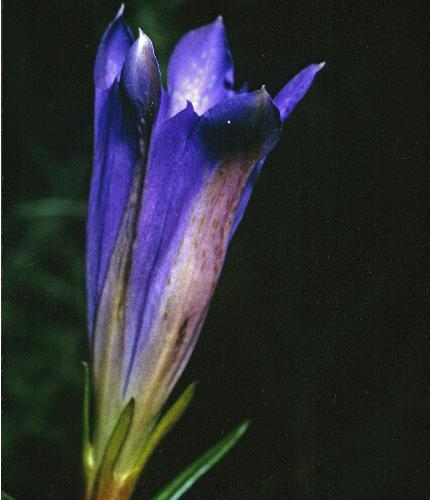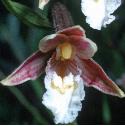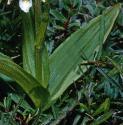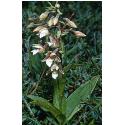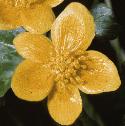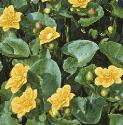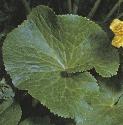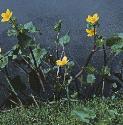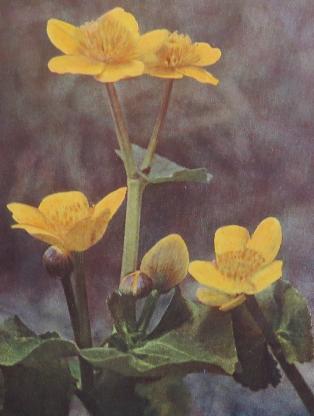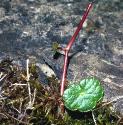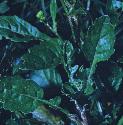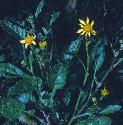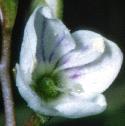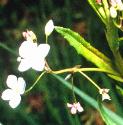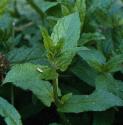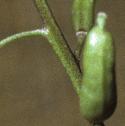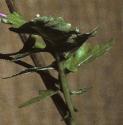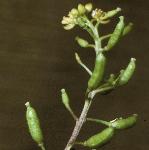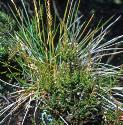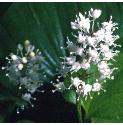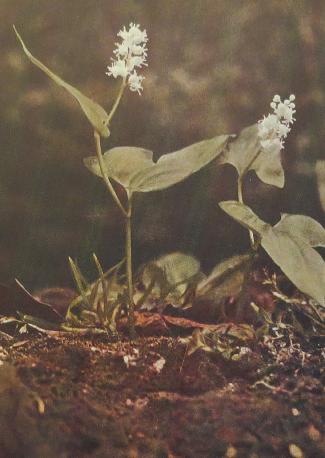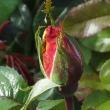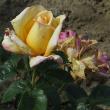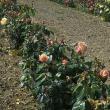|
|
|
Ivydene Gardens Cream Wildflowers Note Gallery: |
|
||||||||||||||||||||||||||||||||||||||||||||||||||||||||||||||||||||||||||||||||||||||||||||
Topic - All Flowers 53 with
|
|
What is PL@NTNET? |
||||||||||||||||||||||||||||||||||||||||||||||||||||||||||||||||||||||||||||||||||||||||||||||
Plant Colour Wheel Uses Uses of Bedding |
Uses of Bulb |
Uses of Rose |
|
|
|
CREAM WILD FLOWER GALLERY |
"SEASONS AND MONTHS SPRING SUMMER AUTUMN WINTER " from The Wildlife Garden Month-by-Month by Jackie Bennett. Published by David & Charles in 1993 (ISBN 0 7153 0033 4). |
I am very grateful to both Ron and Christine Foord for taking 35mm slides using Kodachrome last century and getting their botanical names for each slide verified by the Natural History Museum. They left their collection of UK Native Plant slides and their butterfly collection to the Natural History Museum once both Ron and Christine had died. Many of those digitised UK native Plant slides have been used in the 180 UK Native Family pages. Christine left me her slides of Garden Plants some of which I have included in Ron and Christine Foord - 1036 photos only inserted so far - Garden Flowers - Start Page of each Gallery |
||||||||||||||||||||||||||||||||||||||||||||||||||||||||||||||||||||||||||||||||||||||||
|
WILD FLOWER GALLERY
SEED COLOUR BED PICTURES HABITAT TABLES
See Explanation of Structure of this Website with User Guidelines to aid your use of this website. |
WILD FLOWER FAMILY
|
WILD FLOWER FAMILY
|
WILD FLOWER FAMILY
|
WILD FLOWER FAMILY
|
|
||||||||||||||||||||||||||||||||||||||||||||||||||||||||||||||||||||||||||||||||||||||||||
|
|
|
The English Flower Garden Design, Arrangement, and Plans followed by A description of all the best plants for it and their culture and the positions fitted for them By W. Robinson Author of the "Wild Garden". Fourth Edition. Published by John Murray in London in 1895 is a useful source of culture and positions for them, as is |
|
||||||||||||||||||||||||||||||||||||||||||||||||||||||||||||||||||||||||||||||||||||||||||||
|
|
|
See Wildflower Common Name Index link Table ON A PAGE for more wildflower of the UK common names - from Adder's Tongue to the Goosefoot Family - together with their names in languages from America, Finland, France, Germany, Holland, Italy, Poland, Portugal, Spain and Sweden. |
Wild Flowers as They Grow- Photographed by H. Essenhigh Corke, text by G. Clark Nuttall. Published by Cassell and Company, Ltd in 7 separate books between 1911 and 1914 contains information about UK Native Wildflowers with 1 per chapter. I have summarised some of these chapters and put those into this website, but most will simply have a reference to which book it is in for you to read it yourself. |
||||||||||||||||||||||||||||||||||||||||||||||||||||||||||||||||||||||||||||||||||||||||||||
Common Name Flower Photo |
Botanical Name Flowering Months Flowers Photo |
Height x Spread in inches (cms) WildFlower Family Page Foliage Photo |
Flower Colour Habitat Native in:- Form Photo |
Form from
Form for Wildflowers:- Mat-forming These Forms are used for Bulbs with Herbaceous and Evergreen Perennials.
Shape for Evergreen Shrubs:- These Forms and Shapes are also used for Deciduous and Evergreen Shrubs and Trees. |
||||||||||||||||||||||||||||||||||||||||||||||||||||||||||||||||||||||||||||||||||||||||||||
Bog Rosemary
Flower |
Andromeda polifolia May-June
Plate 55 Illustrated
Flowers Above 4 small photos were taken by Ron or Christine Foord last century Anemone apennina - |
Heath Family
Foliage |
A straggling dwarf shrub of moist to wet acidic peaty ground, most abundant in lowland raised bogs but with scattered occurrences on upland peats. Fruits seldom develop. From sea level to c. 530 m in Wales and England, with an outlying site at 735 m on Mt Keen (S. Aberdeen) Native to Great Britain
Form |
See other photos of
Gallery of Photos/Illustrations, Common Name and Synonym of
Flora of China - |
||||||||||||||||||||||||||||||||||||||||||||||||||||||||||||||||||||||||||||||||||||||||||||
Marsh Arrow-grass
Flower
|
Triglochin palustris
Flowers
These photos were taken by Ron or Christine Foord last century |
Arrow-Grass Family
Foliage |
This slender, perennial, rhizomatous herb occurs in open, damp, grassy or marshy places, often on calcareous substrates. Habitats include wet meadows and rush-pastures, heaths, fens, springs and flushes, saltmarsh fringes flushed with fresh water, and river shingle in upland areas.
Form Native in all Europe, except in Greece and Turkey. |
Gallery of Photos/Illustrations, Common Name and Synonym of |
||||||||||||||||||||||||||||||||||||||||||||||||||||||||||||||||||||||||||||||||||||||||||||
Marsh Bedstraw |
Bedstraw Family |
A perennial herb of seasonal or permanently wetland habitats, including wet meadows, marshes, fens, ditches, ponds and lakesides. It grows on a wide range of soil types, but has a preference for non-calcareous substrates. Native throughout Europe |
See other photos of
Gallery of Photos/Illustrations, Common Name and Synonym of |
|||||||||||||||||||||||||||||||||||||||||||||||||||||||||||||||||||||||||||||||||||||||||||||
Greater Birdsfoot Trefoil |
Lotus uliginosus |
Peaflower Clover 1 Family |
A perennial herb of rushy pastures, wet meadows, marshes, ditches, the margins of lakes, ponds and rivers, wet road verges and other marshy places. It is probably more frequent on acidic soils than calcareous ones. Native in most of Europe (except in Iceland): introduced into Norway, Finland and Hungary |
Photo from Flowers of Europe A Field Guide by Oleg Polunin. Published by Oxford University Press in 1969.
Gallery of Photos/Illustrations, Common Name and Synonym of
|
||||||||||||||||||||||||||||||||||||||||||||||||||||||||||||||||||||||||||||||||||||||||||||
Marsh Cinquefoil
Flower
Flower with stem |
Potentilla palustris
Flower Bud
Juvenile Flower |
Rose 2 Family
Juvenile Fruit
Fruit |
A rhizomatous perennial herb found in permanently flooded swamps, and in mires and wet meadows where the summer water table lies below the soil surface. It prefers nutrient-poor but slightly to moderately base-rich water and grows on a wide range of soils. Habitats include the edges of lakes, natural hollows, bog pools, peat cuttings and floating rafts of vegetation. 0-800 m (Tom a`Choinnich, E. Ross). Potentilla palustris is Native in much of Europe, except in Portugal, Albania, Greece and Turkey
Foliage from Oldany on 27 June
These photos were taken by Ron or Christine Foord |
Photo from Flowers of Europe A Field Guide by Oleg Polunin. Published by Oxford University Press in 1969.
Form
Juvenile Fruit.
See other photos of
Gallery of Photos/Illustrations, Common Name and Synonym of |
||||||||||||||||||||||||||||||||||||||||||||||||||||||||||||||||||||||||||||||||||||||||||||
Wayside Cudweed
Flower
Marsh Dock |
Gnaphalium uliginosum
Flowers Above 4 small photos were taken by Ron or Christine Foord last century |
Daisy Cudweeds Family
Foliage |
An annual of open, muddy ground, usually subject to waterlogging during the winter. It is characteristic of trampled field entrances, compacted arable and cultivated land, the margins of reservoirs and the edges of summer-dry ponds trampled by cattle. It is also found on rutted tracks on heaths and wet rides in woodland. It prefers mildly to quite strongly acidic soils.
Form Native in all Europe |
See other photos of
Gallery of Photos/Illustrations, Common Name and Synonym of |
||||||||||||||||||||||||||||||||||||||||||||||||||||||||||||||||||||||||||||||||||||||||||||
Marsh Fleawort |
Senecio palustris |
This was not available in Collins Pocket Guide to Wild Flowers by McClintock and Fitter in 1978 |
|
|
||||||||||||||||||||||||||||||||||||||||||||||||||||||||||||||||||||||||||||||||||||||||||||
Marsh Foxtail |
Alopecurus geniculatus June-September
Plate 95 Illustrated |
Grass Soft |
A perennial herb, rooting at the nodes, which is frequent in fertile sites which are flooded in winter such as muddy ditch-sides, wet arable fields, pond margins and grazing marshes. It readily colonises bare mud and disturbed areas, where it can become very lush, but avoids both the most acidic and the most alkaline sites. Native to all Europe, except extrreme south-east. |
See other photos of Gallery of Photos/Illustrations, Common Name and Synonym of |
||||||||||||||||||||||||||||||||||||||||||||||||||||||||||||||||||||||||||||||||||||||||||||
Marsh Gentian
Flower |
Gentiana pneumonanthe A striking flower, whose 1-2 inch (2.5-5 cm) azure trumpets, streaked with green outside, occur in July-September
Flower
Propagation - By seeds sown 0.0625 inches (1.5 mm) deep in well-drained pots or pans of sandy soil in cold frame in March; division of plants in March. Seeds sometimes take 1 or 2 years to germinate and soil must be kept moderately moist. |
12 x Gentian Family
Foliage Culture - Compost, 2 parts good loam, 1 part peat, 1 part grit or broken limestone and coarse sand. It dislikes lime. Position - sunny rock garden. All should be kept fairly dry in winter, moist in summer. Plant - September, October, March or April, top-dress with rotted leaf-mould in March. |
A long-lived perennial herb of damp acidic grassland and wet heaths, usually on relatively enriched soils, and often where there is seasonal movement of surface water. The opening up of the habitat by grazing or occasional light burning favours this species by promoting flowering.
Form
These 5 photos were taken by Ron or Christine Foord. |
Native in most of Europe, except in Portugal, Ireland, Great Britain and Belgium. See other photos of |
||||||||||||||||||||||||||||||||||||||||||||||||||||||||||||||||||||||||||||||||||||||||||||
Marsh Hawk's-beard |
Crepis paludosa |
This was not available in Collins Pocket Guide to Wild Flowers by McClintock and Fitter in 1978 |
|
|
||||||||||||||||||||||||||||||||||||||||||||||||||||||||||||||||||||||||||||||||||||||||||||
Marsh Helleborine |
Epipactis palustris |
Orchid 3 Family
Gallery of Photos/Illustrations, Common Name and Synonym of |
A rhizomatous perennial herb of neutral to calcareous fens, marshes, damp pastures, meadows and dune-slacks. It prefers flushed or seasonally inundated areas where competition from other vegetation is reduced. Other habitats include slumped terraces of wet, calcareous sea-cliffs and disused gravel-pits. Native in most of Europe, except in Iceland and Turkey.
See other photos of |
These 8 photos were taken by Ron or Christine Foord. |
||||||||||||||||||||||||||||||||||||||||||||||||||||||||||||||||||||||||||||||||||||||||||||
|
|
|
|
Marsh Horsetail Fern Ally: Horsetail Family:- The Mosses, Liverworts, Stoneworts (Chara and Nitella species), Algae, Seaweeds and other more primitive flowerless plants have only cellular and not fibrous or vascular tissue, and lack true roots and usually stems as well, but are sometimes very hard to distinguish except by a knowledge of their reproductive habits. Horsetails are a distinctive family of leafless and flowerless creeping perennials, with tubular jointed, furrowed, usually erect stems; joints crowned by toothed sheaths, which replace the leaves. At the joints of some species there are more or less regular whorls of ribbed and jointed linear green branches. Spores are borne 406 together on the underside of hexagonal scales, which fit closely together to form a pavement-like surface to the long egg-shaped terminal cones, which in our rarer species end in a very fine point. In some common species the cones are borne on separate, earlier, fatter, pale brown unbranched stems, which appear and wither early in the year, and are followed by the taller thinner greener barren stems, which last till autumn. The foetid submerged Stoneworts (Chara and Nitella) might be taken for Horsetails or Marestail (Marestail Family), but have no true roots and orange fructifications on their branches. Charas are brittle and lime-encrusted; Nitellas are smooth and translucent. " from Collins Pocket Guide to Wild Flowers by David McClintock and R.S.R. Fitter assisted by Francis Rose - ISBN 0 00 219363 9 - Eleventh Impression 1978 |
||||||||||||||||||||||||||||||||||||||||||||||||||||||||||||||||||||||||||||||||||||||||||||
Marsh Mallow
Flower |
Althaea officinalis
Flowers The above 4 small photos were taken by Ron or Christine Foord.
Plate 18 Illustrated |
Mallow Family
Foliage |
Salt-marshes (in dykes near the sea, and in the drier parts of salt-marshes) Native to most of Europe including Great Britain, except North Europe.
Form |
Photo from Chris Garnons-Williams of Althaea officinalis in Herb Garden at RHS Wisley on 11 June 2013
See other photos of
Gallery of Photos/Illustrations, Common Name and Synonym of
Flora of China - The roots are used medicinally. They are also the source of mucilage used for confections. |
||||||||||||||||||||||||||||||||||||||||||||||||||||||||||||||||||||||||||||||||||||||||||||
Marsh Marigold
Flower |
Caltha palustris Glossy Yellow flowers during March-June
Flowers Above 4 small photos were taken by Ron or Christine Foord last century |
18 x 18 Buttercup Family
Foliage |
A perennial herb of various wet habitats, usually neutral to base-rich rather than very acidic, including Alnus carr, the edges of rivers, streams, canals, lakes and ponds, ditches and winter-wet meadows and pastures.
Form Native in all Europe, except Turkey. |
Read about Marsh Marigold (Caltha palustris) in Wild Flowers as They Grow- Photographed by H. Essenhigh Corke, text by G. Clark Nuttall. Published by Cassell and Company, Ltd in Second series, in 1911. Perennial Herb with stout creeping rhizomes and erect ascending or prostrate aerial stems, which grows in marshes, fens, ditches and wet woods, becoming most luxuriant in part shade; rare on very base-poor peat, in Part Shade and wet.
See other photos of
Gallery of Photos/Illustrations, Common Name and Synonym of
Flora of China - 驴蹄草 lu ti cao |
||||||||||||||||||||||||||||||||||||||||||||||||||||||||||||||||||||||||||||||||||||||||||||
Marsh Meadow Grass
Marsh Orchid |
Poa palustris |
This was not available in Collins Pocket Guide to Wild Flowers by McClintock and Fitter in 1978 |
|
|
||||||||||||||||||||||||||||||||||||||||||||||||||||||||||||||||||||||||||||||||||||||||||||
Marsh Pea |
Lathyrus palustris Bluish-purple, 12-20mm wide flowers in June-July. Pods black. |
18-36 x Peaflower Vetches/Peas Family
See other photos of
Gallery of Photos/Illustrations, Common Name and Synonym of |
A perennial herb of base-rich fens, reed-beds and fen-meadows; also, rarely, on marshy ground by rivers. Culture - Soil, ordinary, deep rich. Position - against sunny walls, fences, arbours, or tree stumps or banks. Plant - October, November, March or April. Apply liquid manure occasionally in summer. Water freely in dry weather. Prune away stems close to ground in October. Top-dress with decayed manure in March. Propagation - By seed or division of roots in March or April.
Native in Northern Europe and Central Europe. |
|
||||||||||||||||||||||||||||||||||||||||||||||||||||||||||||||||||||||||||||||||||||||||||||
Marsh Pennywort |
Hydrocotyle vulgaris
Foliage The 2 small photos above were taken by Ron or Christine Foord |
Marsh Pennywort Family
Form |
A mat-forming perennial herb found in a wide range of damp or wet habitats, including carr, mires, fens, fen-meadows, swamps, marshes, in soakways and along spring-lines, and in dune-slacks and wet hollows in stabilised shingle. In very oceanic areas it grows in drier habitats, such as turfed wall-tops. 0-530 m (Tal-y-Fan, Caerns.). Native in much of Europe, except in Finland, Greece, Turkey, Bulgaria and Romania |
See other photos of |
||||||||||||||||||||||||||||||||||||||||||||||||||||||||||||||||||||||||||||||||||||||||||||
Marsh Ragwort
Flower
Marsh Sow-thistle |
Senecio aquaticus
Flowers The above 4 small photos were taken by Ron or Christine Foord. |
Daisy Family
Foliage |
A biennial, sometimes perennial, herb occurring in marshes, wet meadows, rush-pastures, and by streams, ponds and ditches.
Form Native throughout Europe, except in the extreme south-east. |
Gallery of Photos/Illustrations, Common Name and Synonym of |
||||||||||||||||||||||||||||||||||||||||||||||||||||||||||||||||||||||||||||||||||||||||||||
Marsh Speedwell
Flower |
Veronica scutellata Few whitish fowers on long stalks in alternate open spikes up the stem in June-August
Flowers Above 4 small photos were taken by Christine or Ron Foord.
Gallery of Photos/Illustrations, Common Name and Synonym of |
Figwort - Speedwells Family
Foliage Culture - Soil, ordinary rich. Position - water garden. Hardy herbaceous perennial plante in Sep-Nov or Feb-May. Lift, divide and replant every third year. Propagation - By division of roots in autumn or spring. |
This perennial herb is found in a wide range of wetland habitats, including pond and lake margins, marshes, fens and fen-meadows, wet grassland, hillside flushes, bogs and wet heath, often on acidic soils. It occurs in both open habitats and amongst tall vegetation.
Form From Plate 64 of Native in all Europe. |
|
||||||||||||||||||||||||||||||||||||||||||||||||||||||||||||||||||||||||||||||||||||||||||||
Marsh Stitchwort |
Stellaria palustris |
24 x 12 Pink Family |
This perennial, rhizomatous herb is a species of damp and wet places, including pastures, grassy fens and marshes, especially in areas with standing water in winter. It is also able to colonise artificial habitats such as old peat diggings. Generally lowland, but reaching 360 m on Cronkley Fell (N.W. Yorks.). Native in much of Europe, except in Portugal, Spain, Ireland, Iceland, Albania, Greece and Turkey. |
Soil - Marshes and base-rich fens southwards from Perth. Ireland, chiefly in central districts and absent from the South-West. Plant Type - Perennial with slender creeping stock and smoothly 4-angled erect flowering and non-flowering shoots. Foliage - Grey-Green with smooth edges. Flower Colour in Month(s). Seed - White in May-July followed by dark reddish-brown seeds in ovoid-oblong capsules. Comment - Visited by flies.
Gallery of Photos/Illustrations, Common Name and Synonym of |
||||||||||||||||||||||||||||||||||||||||||||||||||||||||||||||||||||||||||||||||||||||||||||
|
used within lifecycle of Butterfly Comma,
Flower
Marsh Valerian |
Cirsium palustre
Flowers Above 4 small photos were taken by Ron or Christine Foord last century |
Daisy Thistle Family
Foliage |
A monocarpic perennial herb of mires, fens, marshes, damp grassland, rush-pastures, wet woodland, montane springs and flushes, and tall-herb vegetation on mountain ledges. It reproduces by seed, which may persist for many years, as, for example, during the dark phase of a coppice cycle. 0-760 m (Cross Fell, Cumberland), and 845 m on Great Dun Fell (Westmorland). Native in all Europe, except Iceland, Albania, Greece and Turkey
Form |
Read about Marsh Thistle (Carduus palustris) in Wild Flowers as They Grow- Photographed by H. Essenhigh Corke, text by G. Clark Nuttall. Published by Cassell and Company, Ltd in Second series, in 1911.
See other photos of
Gallery of Photos/Illustrations, Common Name and Synonym of |
||||||||||||||||||||||||||||||||||||||||||||||||||||||||||||||||||||||||||||||||||||||||||||
Marsh Woundwort
Flower |
Stachys palustris July onwards
Flowers Above 4 small photos were taken by Ron or Christine Foord last century |
Thyme 2 Family
Foliage |
A perennial herb of damp places. It grows by streams, rivers, ditches and ponds, in fens, marshes and swamps, on rough ground and occasionally in cultivated fields. It is typically found on intermittently flooded and poorly drained soils. Native in all Europe, except in Iceland.
Form |
Gallery of Photos/Illustrations, Common Name and Synonym of |
||||||||||||||||||||||||||||||||||||||||||||||||||||||||||||||||||||||||||||||||||||||||||||
Marsh Yellow Cress
Seed Pod
Martin's Ramping-Fumitory
Masterwort |
Rorippa islandica
Seed Pods The 5 small photos above were taken by Ron or Christine Foord |
24 x 12 Crucifer (Cabbage/Mustard) 2 Family
Foliage |
An annual or short-lived perennial herb found in open, muddy habitats such as lake, pond and pool margins, ditch banks, depressions in pasture, in turloughs and rarely on rocks by rivers. There are also records from waste ground and tips.
Form Native in all Europe, except in Albania, Greece and Turkey. |
"Annual or biennial herb with pale slender tap-root and erect hollow-angled stem, simple or branching. It grows in Pond-sides, river banks and other moist places, especially where water stands only in winter. Also in dry spots, especially railway tracks throughout the UK in Full Sun. It has Pale Yellow flowers in June-September and is vsited by occasional flies and small bees; automatically self-pollinated.
Flower with Seed Pods" from Marsh Yellow Cress page.
Gallery of Photos/Illustrations, Common Name and Synonym of |
||||||||||||||||||||||||||||||||||||||||||||||||||||||||||||||||||||||||||||||||||||||||||||
Mat Grass Used within lifecycles of Butterfly Small Heath,
Flower
Matted Sea Lavender |
Nardus stricta June-August
Above 3 small photos were taken by Ron or Christine Foord. |
Grass Soft
Foliage Native in all Europe, except in Turkey. |
A densely tufted, shortly rhizomatous perennial found on winter-wet, base-poor, infertile and peaty soils, occurring in great quantity on upland hill-slopes, moorland and mountains, including snow-bed communities, but also found on lowland mires, heaths and acidic grasslands, and even sometimes in the upper reaches of saltmarsh turf. 0-1250 m (Ben Macdui, S. Aberdeen). The stiff, sharp leaves make it unpalatable; hence it tends to survive in areas of heavy grazing in the USA as a noxious weed.
Form |
Gallery of Photos/Illustrations, Common Name and Synonym of |
||||||||||||||||||||||||||||||||||||||||||||||||||||||||||||||||||||||||||||||||||||||||||||
May Lily
Flower |
Maianthemum bifolium May-June
Flowers
Above 4 small photos were taken by Christine or Ron Foord. |
Lily Family
Foliage |
A rhizomatous, perennial herb of free-draining acidic soils in Quercus-Betula woodlands, but also persisting at sites replanted with conifers. Flowering and seed-set is poor. Lowland. Native in much of Europe, except in Portugal, Spain, Ireland, Iceland, Albania, Greece, Turkey and Bulgaria.
Form |
Read about May Lily (Maianthemum bifolium) in Wild Flowers as They Grow- Photographed by H. Essenhigh Corke, text by G. Clark Nuttall. Published by Cassell and Company, Ltd between 1911 and 1914 - within 1 of 7 volumes.
Gallery of Photos/Illustrations, Common Name and Synonym of |
||||||||||||||||||||||||||||||||||||||||||||||||||||||||||||||||||||||||||||||||||||||||||||
Meadow Barley
Meadow Beaked Milk-vetch |
Grass Soft |
A perennial herb of meadows, pastures and roadsides, often in river valley floodplains and showing a strong preference for sticky clay soils. In coastal areas it is frequently abundant in grazing marsh grasslands and on earthen sea walls. Native in Western Europe and Southern Europe. |
See other photos of
Gallery of Photos/Illustrations, Common Name and Synonym of |
|||||||||||||||||||||||||||||||||||||||||||||||||||||||||||||||||||||||||||||||||||||||||||||
Meadow Brome Meadow Buttercup |
Bromus commutatus Plate 99 Illustrated |
Grass Soft |
An annual of unimproved damp meadows, also found on waysides, road verges and the borders of fields and tracks. Many recent records are of casual occurrences arising from grass-seed impurities. Native and widespread in Europe. |
See other photos of
Gallery of Photos/Illustrations, Common Name and Synonym of |
||||||||||||||||||||||||||||||||||||||||||||||||||||||||||||||||||||||||||||||||||||||||||||
UKButterflies Larval Foodplants website page lists the larval foodplants used by British butterflies. The name of each foodplant links to a Google search. An indication of whether the foodplant is a primary or secondary food source is also given. Please note that the Butterfly you see for only a short time has grown up on plants as an egg, caterpillar and chrysalis for up to 11 months, before becoming a butterfly. If the plants that they live on during that time are removed, or sprayed with herbicide, then you will not see the butterfly. |
|
|||||||||
Plants used by the Butterflies follow the Plants used by the Egg, Caterpillar and Chrysalis as stated in and The Butterflies of Britain & Ireland New Revised Edition by Jeremy Thomas & Richard Lewington. |
||||||||||
Plant Name |
Butterfly Name |
Egg/ Caterpillar/ Chrysalis/ Butterfly |
Plant Usage |
Plant Usage Months |
||||||
Egg, |
1 egg under leaf. |
10 days in May-June |
||||||||
Egg, |
Eggs laid in batches encircling the branch of the food plant. |
Hatches after 18-22 days in April. |
||||||||
Egg, |
Groups of eggs on upper side of leaf. |
- |
||||||||
Egg, |
1 egg at base of plant. |
Late August-April |
||||||||
Egg, |
Groups of eggs on upper side of leaf. |
- |
||||||||
Egg, |
1 egg laid on underside of leaflets or bracts. |
7 days in June. |
||||||||
Egg, |
1 egg laid on underside of leaflets or bracts. |
7 days in June. |
||||||||
Egg, |
1 egg laid under the leaf or on top of the flower. |
7 days in August. |
||||||||
Egg, |
1 egg on underside of a flower bud on its stalk. |
7 days. |
||||||||
Egg, |
1 egg on underside of a flower bud on its stalk. |
7 days. |
||||||||
Egg, |
1 egg under leaf. |
10 days in May-June. |
||||||||
Egg, |
1 egg on leaf. |
2 weeks |
||||||||
Cabbages - Large White eats all cruciferous plants, such as cabbages, mustard, turnips, radishes, cresses, nasturtiums, wild mignonette and dyer's weed |
Egg,
|
40-100 eggs on both surfaces of leaf. |
May-June and August-Early September. 4.5-17 days. |
|||||||
Egg, |
1 egg on underside of leaf. |
May-June and August. 7 days. |
||||||||
Cabbages:- |
Egg, |
1 egg on underside of leaf. |
July or August; hatches in 3 days. |
|||||||
Cabbages:- |
Egg, |
1 egg laid in the tight buds and flowers. |
May-June 7 days. |
|||||||
Cherry with |
Egg, |
Eggs laid in batches encircling the branch of the food plant. |
Hatches after 18-22 days in April. |
|||||||
Egg, |
Groups of eggs on upper side of leaf. |
- |
||||||||
Egg, |
1 egg on leaf. |
10 days in May-June. |
||||||||
Egg, |
1 egg on leaf. |
6 days in May-June. |
||||||||
Egg, |
1 egg under leaf. |
|
||||||||
|
(Common CowWheat, Field CowWheat) |
Egg, |
Eggs laid in batches on the under side of the leaves. |
Hatches after 16 days in June. |
|||||||
Currants |
Egg, |
Groups of eggs on upper side of leaf. |
|
|||||||
Egg, |
Eggs laid in batches on the under side of the leaves. |
Hatches after 20 days in July. |
||||||||
Dog Violet with |
Egg, |
1 egg on oak or pine tree trunk |
15 days in July. |
|||||||
Dog Violet with |
Egg, |
1 egg on leaf or stem. |
Hatches after 15 days in May-June. |
|||||||
Dog Violet with |
Egg, |
1 egg on leaf or stem. |
Hatches after 10 days in May-June. |
|||||||
Egg, |
1 egg on underside of a flower bud on its stalk. |
7 days. |
||||||||
Egg, |
Eggs laid in batches encircling the branch of the food plant. |
Hatches after 18-22 days in April. |
||||||||
False Brome is a grass (Wood Brome, Wood False-brome and Slender False-brome) |
Egg, |
1 egg under leaf. |
... |
|||||||
Egg, |
Eggs laid in batches on the under side of the leaves. |
Hatches after 20 days in July. |
||||||||
Egg, |
1 egg laid on underside of leaflets or bracts. |
7 days in June. |
||||||||
Egg, |
1 egg on leaf or stem. |
Hatches after 10 days in May-June. |
||||||||
Egg, |
1 egg on underside of a flower bud on its stalk. |
7 days. |
||||||||
Egg, |
1 egg laid under the leaf or on top of the flower. |
7 days in August. |
||||||||
Egg, |
1 egg on leaf. 5 or 6 eggs may be deposited by separate females on one leaf. |
14 days in July-August. |
||||||||
Egg, |
1 egg on underside of a flower bud on its stalk. |
7 days. |
||||||||
Egg, |
1 egg laid in the tight buds and flowers. |
May-June 7 days. |
||||||||
Egg, |
Eggs laid in batches on the under side of the leaves. |
Hatches after 20 days in July. |
||||||||
Egg, |
Groups of eggs on upper side of leaf. |
|
||||||||
Egg, |
1 egg under leaf. |
1 then |
||||||||
Egg, |
1 egg on underside of a flower bud on its stalk. |
7 days. |
||||||||
Egg, |
1 egg at base of plant. |
Late August-April. |
||||||||
Egg, |
1 egg on leaf. |
10 days in May-June. |
||||||||
Egg, |
1 egg on leaf. |
2 weeks |
||||||||
Egg, |
1 egg on leaf. |
6 days in May-June. |
||||||||
Egg, |
1 egg on underside of leaf. |
May-June and August. 7 days. |
||||||||
Egg, |
1 egg on leaf. 5 or 6 eggs may be deposited by separate females on one leaf. |
14 days in July-August. |
||||||||
Narrow-leaved Plantain (Ribwort Plantain) |
Egg, |
Eggs laid in batches on the under side of the leaves. |
Hatches after 16 days in June. |
|||||||
Narrow-leaved Plantain (Ribwort Plantain) |
Egg, |
Eggs laid in batches on the under side of the leaves. |
Hatches after 16 days in June. |
|||||||
Nasturtium from Gardens |
Egg, |
1 egg on underside of leaf. |
May-June and August. 7 days. |
|||||||
Egg, |
1 egg on tree trunk |
15 days in July. |
||||||||
Mountain pansy, |
Egg, Chrysalis |
1 egg laid under the leaf or on top of the flower. |
7 days in August. 3 weeks in September |
|||||||
Egg, |
1 egg on tree trunk. |
15 days in July. |
||||||||
Egg, |
Eggs laid in batches on the under side of the leaves. |
Hatches after 20 days in July. |
||||||||
Egg, |
Eggs laid in batches encircling the branch of the food plant. |
Hatches after 18-22 days in April. |
||||||||
Egg, |
Groups of eggs on upper side of leaf. |
- |
||||||||
Egg, |
1 egg under leaf. |
|
||||||||
Egg, |
1 egg laid under the leaf or on top of the flower. |
7 days in August. |
||||||||
Egg, |
Eggs laid in batches encircling the branch of the food plant. |
Hatches after 18-22 days in April. |
||||||||
Egg, |
Eggs laid in batches on the under side of the leaves. |
Hatches after 16 days in June. |
||||||||
Egg, |
1 egg on underside of a flower bud on its stalk. |
7 days. |
||||||||
Egg, |
1 egg on underside of a flower bud on its stalk. |
7 days. |
||||||||
Egg, |
Groups of eggs on upper side of leaf. |
|
||||||||
Egg, |
1 egg under leaf. |
|
||||||||
Egg, |
1 egg on leaf. |
2 weeks |
||||||||
Trefoils 1, 2, 3 |
Egg, |
1 egg on leaf. |
6 days in May-June. |
|||||||
Egg, |
Groups of eggs on upper side of leaf. |
- |
||||||||
Egg, |
1 egg laid on underside of leaflets or bracts. |
7 days in June. |
||||||||
Violets:- |
Egg, |
1 egg on underside of leaf or on stalk. |
July-August for 17 days. |
|||||||
Violets:- |
Egg, |
1 egg on stem or stalk near plant base. |
July to hatch in 8 months in March. |
|||||||
Egg, |
1 egg on leaf. |
2 weeks. |
||||||||
Egg, |
Eggs laid in batches encircling the branch of the food plant. |
Hatches after 18-22 days in April. |
||||||||
Egg, |
1 egg on leaf. 5 or 6 eggs may be deposited by separate females on one leaf. |
14 days in July-August. |
||||||||
Willow |
Egg, |
Eggs laid in batches encircling the branch of the food plant. |
Hatches after 18-22 days in April. |
|||||||
Egg, |
Eggs laid in batches on the under side of the leaves. |
Hatches after 20 days in July. |
||||||||
Plants used by the Butterflies |
||||||||||
Plant Name |
Butterfly Name |
Egg/ Caterpillar/ Chrysalis/ Butterfly |
Plant Usage |
Plant Usage Months |
||||||
Asters |
Butterfly |
Eats nectar. |
|
|||||||
Runner and Broad Beans in fields and gardens |
Butterfly |
Eats nectar |
April-June or July-September. |
|||||||
Aubretia in gardens |
Butterfly |
Eats nectar |
May-June or August till killed by frost and damp in September-November |
|||||||
Butterfly |
Eats sap exuding from trunk. |
April-Mid June and Mid July-Early September for second generation. |
||||||||
Butterfly |
Eats nectar. |
20 days. |
||||||||
Butterfly |
Eats nectar |
May-June |
||||||||
Holly Blue |
Butterfly |
Eats nectar |
April-Mid June and Mid July-Early September for second generation. |
|||||||
Butterfly |
Eats nectar. |
July-October. |
||||||||
Buddleias |
Butterfly |
Eats nectar. |
July-October. |
|||||||
Wood White |
Butterfly |
Eats nectar |
May-June. |
|||||||
Cabbage and cabbages in fields |
Butterfly |
Eats nectar |
April-June or July-September. |
|||||||
Butterfly |
Eats nectar |
July-October |
||||||||
Adonis Blue |
Butterfly |
Eats nectar. |
1 Month during Mid-May to Mid-June or during August-September |
|||||||
Pale Clouded Yellow |
Butterfly |
Eats nectar |
May-June or August till killed by frost and damp in September-November |
|||||||
Cow-wheat |
Butterfly |
Eats nectar |
June-July |
|||||||
Butterfly |
Eats nectar |
May-June |
||||||||
Butterfly |
Eats nectar |
April-Mid June and Mid July-Early September for second generation. |
||||||||
Butterfly |
Eats nectar. |
3 weeks between May and September |
||||||||
Germander Speedwell (Veronica chamaedrys - Birdseye Speedwell) |
Butterfly |
Eats nectar |
June-July |
|||||||
Butterfly |
Eats nectar. |
July-October. |
||||||||
Butterfly |
Eats nectar |
30 days in May-June. |
||||||||
Butterfly |
Eats nectar |
May-September |
||||||||
Butterfly |
Eats nectar. |
May-June for 18 days. |
||||||||
Butterfly |
Eats nectar. |
July-October |
||||||||
Butterfly |
Eats nectar. |
1 Month. |
||||||||
Butterfly |
Eats nectar. |
July-October. |
||||||||
Painted Lady |
Butterfly |
Eats nectar |
July-October. |
|||||||
Marigolds in gardens |
Butterfly |
Eats nectar |
May-June or August till killed by frost and damp in September-November |
|||||||
Butterfly |
Eats nectar. |
1 Month during Mid-May to Mid-June or during August-September. |
||||||||
Michaelmas Daisies |
Butterfly |
Eats nectar. |
July-October |
|||||||
Butterfly |
Eats nectar |
April-June or July-September. |
||||||||
Narrow-leaved Plantain (Ribwort Plantain) |
Butterfly |
Eats nectar |
June-July |
|||||||
Nasturtiums in gardens |
Butterfly |
Eats nectar |
April-June or July-September |
|||||||
Butterfly |
Eats sap exuding from trunk. |
April-Mid June and Mid July-Early September for second generation. |
||||||||
Butterfly |
Eats nectar |
June. |
||||||||
Butterfly |
Eats nectar |
May-June. |
||||||||
Butterfly |
Eats nectar |
July-October. |
||||||||
Butterfly |
Eats nectar |
July-May |
||||||||
Butterfly |
Eats nectar |
7 weeks in July-August. |
||||||||
Comma |
Butterfly |
Eats nectar. |
July-October. |
|||||||
Butterfly |
Eats nectar. |
3 weeks between May and September |
||||||||
Trefoils 1, 2, 3 |
Butterfly |
Eats nectar. |
1 Month during Mid-May to Mid-June or during August-September |
|||||||
Butterfly |
Eats nectar. |
20 days in August. |
||||||||
Butterfly |
Eats nectar |
June.
|
||||||||
Butterfly |
Eats nectar |
June-July |
||||||||
Apple/Pear/Cherry/Plum Fruit Tree Blossom in Spring |
Butterfly |
Eats Nectar |
April-May |
|||||||
Rotten Fruit |
Butterfly |
Drinks juice |
July-September |
|||||||
Tree sap and damaged ripe fruit, which are high in sugar |
Butterfly |
Hibernates inside hollow trees or outhouses until March. Eats sap or fruit juice until April. |
10 months in June-April |
|||||||
Wild Flowers |
Large Skipper |
Butterfly |
Eats Nectar |
June-August |
||||||
Links to the other Butterflies:- Black Hairstreak uses Blackthorn, Privet, Guelder Rose, and Wayfaring tree I have detailed the use of plants by these eggs, caterpillars, chrysalis and butterfly in full with either photos of those butterflies, etc or illustrations from Sandars. It shows that they do use plants all year round and I will insert the information of their Life Histories into the remainder of the Butterfly Description Pages but I will put no further information in this table or the Butterfly Name with its use of plants table. Please see what a council did to destroy the native habitat, so that children could ride bicyles anywhere in the park in the row below. Details of what plant is used by each of the different 'egg, caterpillar, chrysalis or butterfly' unit and for how long is given in the table on the left. At least 2 of these butterflies live in America as well as in the UK in 2022:- |
||||||||||
The following is an excerpt from my Comments about the proposed destruction of the wildlife habitats at Cobtree Manor Park in the summer of 2010 from my Mission Statement page:- "We would be sorry to lose the butterflies on the bluebells, bramble and ivy that would be restricted to only the very small area of proposed Wildlife Meadow by the Woods at the bottom of a hill with water springs on it. The wildlife is now being excluded from all the other areas by the "pruning", so that the nettles, brambles etc which had for instance the butterfly life cycle included; are now being ruthlessly removed to create a garden, not a park, with neat little areas." When you look at the life history graphs of each of the 68 butterflies of Britain, you will see that they use plants throughout all 12 months - the information of what plant is used by the egg, caterpillar, chrysalis or butterfly is also given in the table on the left. With this proposed removal of all plants required for butterflies etc to live in and pro-create; at least once a year by the autumn or spring clearing up, you destroy the wildlife in this park as is done in every managed park in the world. Please leave something for the wildlife to live in without disturbance; rather than destroy everything so children can ride their bicycles anywhere they want when the park is open during the day and they are not at school. |
||||||||||
THE LIFE AND DEATH OF A FLAILED CORNISH HEDGE
September 21st. Most of the survey mile closely flailed today along both sides of the road. End note, June 2008. I hear spring vetch has been officially recorded somewhere in West Cornwall and confirmed as a presence in the county, so perhaps I can be permitted to have seen it pre-1972 in the survey mile. I wonder where they found it? It's gone from hedges where it used to be, along with other scarcities and so-called scarcities that used to flourish in so many hedges unrecorded, before the flail arrived. I have given careful thought to including mention of some of the plants and butterflies. So little seems to be known of the species resident in Cornish hedges pre-flail that I realise some references may invite scepticism. I am a sceptic myself, so sympathise with the reaction; but I have concluded that, with a view to re-establishing vulnerable species, it needs to be known that they can with the right management safely and perpetually thrive in ordinary Cornish hedges. In future this knowledge could solve the increasingly difficult question of sufficient and suitable sites for sustainable wild flower and butterfly conservation - as long as it is a future in which the hedge-flail does not figure.
CHECK-LIST OF TYPES OF CORNISH HEDGE FLORA by Sarah Carter of Cornish Hedges Library:-
Titles of papers available on www.cornishhedges.co.uk:-
THE GUILD OF CORNISH HEDGERS is the non-profit-making organisation founded in 2002 to support the concern among traditional hedgers about poor standards of workmanship in Cornish hedging today. The Guild has raised public awareness of Cornwall's unique heritage of hedges and promoted free access to the Cornish Hedges Library, the only existing source of full and reliable written knowledge on Cornish hedges." |
||||||||||
Common Name of each Plant within each Common Name Extras Page:- |
Common Name of each Plant within each Common Name Extras Page:- |
|
Common Name Extras 57 Common Name Extras 58:- Common Name Extras 59 Common Name Extras 60 |
Common Name Extras 60 Common Name Extras 61 Common Name Extras 62 Common Name Extras 63 Common Name Extras 64 United States Department of Agriculture Plant Hardiness Zone Map - This map of USA is based on a range of average annual minimum winter temperatures, divided into 13 of 10-degree F zones, that this plant will thrive in USA, Alaska, Hawaii and Puerto Rico. There are other Hardiness Zone Maps for the rest of the world including the one for Great Britain and Ireland of zones 7a to 10a. If the plant you see here has the same zone in your area of that country, then you can grow it at your home. |
Normally in the fourth column in the next table, I insert which countries in Europe, the plant is native in; introduced into or except from. Seeing which Native UK Wildflowers are also native in your country within Europe, Soviet Union, USA, Canada or China you can then use them with the cultivated plants for your country in your own home garden - so help your local wildlife including Butterflies - and home with snippets from Flower Arrangements from Wild Flowers by Violet Stevenson. Published by J M Dent & Sons in 1972. ISBN 0 460 07844 5. View my chapter precis before executing the flower arranging of the plants.
The Saxifraga Foundation is a network of European nature photographers, whose aim is to stimulate and facilitate the conservation of European biodiversity. They do so by providing high-quality nature pictures free of charge. The website free natureimages.eu is an initiative of the Saxifraga Foundation. The Saxifrage foundation is assisted by the Crossbill Guides Foundation, Dutch Butterfly Conservation (De Vlinderstichting) and Foto Fitis. Currently, Saxifraga is working on two projects. The first one is the construction of a gallery of pictures of European plants, animals and landscapes. To download these pictures, go to the Saxifraga Gallery. With the search engine you can search for images using the scientific name or the common name of plants and animals in Dutch and English. The second project is the creation of a collection of images of the Dutch landscape (NL in Beeld). This has been done by taking pictures in a grid in a systematic way. We have used the so called Amersfoort-coordinates, which are found on official Dutch topographic maps. The Amersfoort grid is a collection of square kilometers. To find more details visit the website of NL in Beeld. The pictures can be viewed at the Saxifraga Gallery.
British Trees website:- Acknowledgements |
Cultural Needs of Plants "Understanding Fern Needs |
|
It is worth remembering that especially with roses that the colour of the petals of the flower may change - The following photos are of Rosa 'Lincolnshire Poacher' which I took on the same day in R.V. Roger's Nursery Field:- |
|
Closed Bud |
|
Opening Bud |
|
Juvenile Flower |
|
Older Juvenile Flower |
|
Middle-aged Flower - Flower Colour in Season in its |
|
Mature Flower |
|
Juvenile Flower and Dying Flower |
|
Form of Rose Bush |
There are 720 roses in the Rose Galleries; many of which have the above series of pictures in their respective Rose Description Page. So one might avoid the disappointment that the 2 elephants had when their trunks were entwined instead of them each carrying their trunk using their own trunk, and your disappointment of buying a rose to discover that the colour you bought it for is only the case when it has its juvenile flowers; if you look at all the photos of the roses in the respective Rose Description Page!!!! |
|
My current ambition at my retired age of 73 in 2022 (having started this website in 2005) is to complete the following:- Wildflower Flower Shape and Landscape Uses Gallery has an empty framework that I created on 20 February 2022. When all the remainder of the UK wildflowers have been checked:-
Then, the wildflower entries in the Wildflower Flower Shape and Landscape Uses Gallery will be filled in after each Wildflower has its cultivation details added to the Botanical Names and Common Names Galleries. Starting the above from 20 February 2022, I think it might take me a few years, but it does mean that as I progress then you will be able to associate more wildflowers with more of all the plant types of the cultivated plants who have similar growing requirements. Then, more of the natural world with its wildlife could also inhabit your garden. |
|
Aims of the Wild Flower Society
Plants included in Schedule 8 of the Wildlife and Countryside Act, 1981 |
From the Ivydene Gardens Box to Crowberry Wild Flower Families Gallery: |
||
The Bumblebee Pages website is divided into five major areas: • Bumblebees which deals solely with bumblebees, and was the original part of the site. • Invertebrates, which deals with all the other invertebrates. • Homework answers, where you'll find hints and tips to common questions set as biology, ecology, botany, zoology homework, there are also definitions of common terms in biology. • Window box gardens, this was started when we were exiled to central Paris, and 2 north-facing window boxes were all the garden available, however it was amazing the wildlife those window boxes attracted. You'll find plant lists, hints and tips, etc. • Torphins, this is the village in north-east Scotland where we are now located. In this part of the site you can find photographs of invertebrates found locally, where to see them and when, also links to pages with more detailed information.
FORCED INDOOR BULBS in Window Box Gardens. Once these have flowered don't throw them out. Cut off the heads (unless you want seed) then put them somewhere that the leaves can get the sun. This will feed the bulb for the next year. Once the leaves have died you can plant the bulbs outside and they will flower at the normal (unforced) time next year. The narcissus Tete-a-tete is particularly good, and provides early colour and a delicate fragrance too. Below I have listed groups of plants. I have tried to include at least four plants in each list as you may not be able to find all of them, although, unless you have a very large windowbox, I would recommend that you have just three in each box. |
||
Theme |
Plants |
Comments |
Thyme |
Thymus praecox, wild thyme Thymus pulegioides Thymus leucotrichus Thymus citriodorus |
Thymes make a very fragrant, easy to care for windowbox, and an excellent choice for windy sites. The flower colour will be pinky/purple, and you can eat the leaves if your air is not too polluted. Try to get one variegated thyme to add a little colour when there are no flowers. |
Herb |
Sage, mint, chives, thyme, rosemary |
Get the plants from the herb section of the supermarket, so you can eat the leaves. Do not include basil as it need greater fertility than the others. Pot the rosemary up separately if it grows too large. |
Mints |
Mentha longifolia, horse mint Mentha spicata, spear mint Mentha pulgium, pennyroyal Mentha piperita, peppermint Mentha suaveolens, apple mint |
Mints are fairly fast growers, so you could start this box with seed. They are thugs, though, and will very soon be fighting for space. So you will either have to thin and cut back or else you will end up with one species - the strongest. The very best mint tea I ever had was in Marrakesh. A glass full of fresh mint was placed in front of me, and boiling water was poured into it. Then I was given a cube of sugar to hold between my teeth while I sipped the tea. Plant this box and you can have mint tea for months. |
Heather |
Too many to list See Heather Shrub gallery |
For year-round colour try to plant varieties that flower at different times of year. Heather requires acid soils, so fertilise with an ericaceous fertilser, and plant in ericaceous compost. Cut back after flowering and remove the cuttings. It is best to buy plants as heather is slow growing. |
Blue |
Ajuga reptans, bugle Endymion non-scriptus, bluebell Myosotis spp., forget-me-not Pentaglottis sempervirens, alkanet |
This will give you flowers from March till July. The bluebells should be bought as bulbs, as seed will take a few years to flower. The others can be started from seed. |
Yellow |
Anthyllis vulneraria, kidney vetch Geum urbanum, wood avens Lathryus pratensis, meadow vetchling Linaria vulgaris, toadflax Lotus corniculatus, birdsfoot trefoil Primula vulgaris, primrose Ranunculus acris, meadow buttercup Ranunculus ficaria, lesser celandine |
These will give you flowers from May to October, and if you include the primrose, from February. Try to include a vetch as they can climb or trail so occupy the space that other plants can't. All can be grown from seed. |
White |
Trifolium repens, white clover Bellis perennis, daisy Digitalis purpurea alba, white foxglove Alyssum maritimum Redsea odorata, mignonette |
All can be grown from seed. The clover and daisy will have to be cut back as they will take over. The clover roots add nitrogen to the soil. The mignonette flower doesn't look very special, but the fragrance is wonderful, and the alyssum smells of honey. |
Pink |
Lychnis flos-cucli, ragged robin Scabiosa columbaria, small scabious Symphytum officinale, comfrey |
The comfrey will try to take over. Its leaves make an excellent fertiliser, and are very good on the compost heap, though windowbox gardeners rarely have one. |
Fragrant |
Lonicera spp., honeysuckle Alyssum maritimum Redsea odorata, mignonette Lathyrus odoratus, sweet pea |
The sweet pea will need twine or something to climb up, so is suitable if you have sliding windows or window that open inwards. You will be rewarded by a fragrant curtain every time you open your window. |
Spring bulbs and late wildflowers |
Galanthus nivalis, snowdrop Narcissus pseudonarcissus, narcissius Crocus purpureus, crocus Cyclamen spp. |
The idea of this box is to maximize your space. The bulbs (cyclamen has a corm) will flower and do their stuff early in the year. After flowering cut the heads off as you don't want them making seed, but leave the leaves as they fatten up the bulbs to store energy for next year. The foliage of the wildflowers will hide the bulb leaves to some extent. Then the wildflowers take over and flower till autumn |
Aster spp., Michaelmas daisy Linaria vulgaris, toadflax Lonicera spp., honeysuckle Succisa pratensis, devil's bit scabious Mentha pulgium, pennyroyal |
||
|
|
|
Bee Garden in Europe or North America |
|
|
Wildlife-friendly Show Gardens With around 23 million gardens in the UK, covering 435,000 ha, gardens have great potential as wildlife habitats. And, with a bit of planning and a few tweaks, they can indeed be wonderful places for a whole host of creatures, from birds to bees, butterflies, frogs and toads, as well as many less obvious creatures. Wildlife-friendly gardens can be beautiful too, and a colourful garden full of life can lift the spirits and give immense pleasure, and can also help to connect people, both young and old, with our wonderful wildlife. The eight-point plan for a wildlife-friendly garden
Many of our gardens at Natural Surroundings demonstrate what you can do at home to encourage wildlife in your garden. Follow the links below to explore our show gardens, and when you visit, be sure to pick up a copy of our Wildlife Gardening Trail guide
|
||
Database of Insects and their Food Plants from the Biological Records Centre:- This database is primarily a collation of published interactions between Great Britain 's invertebrate herbivores (insects and mites) and their host plants. There are also some interactions for the invertebrates closely associated with herbivores, such as predators, parasitoids, cleptoparasites and mutualists. DBIF contains about 47,000 interactions for roughly 9,300 invertebrate taxa (species, sub-species and forms) and 5,700 plant taxa (species, genera and broader groupings). DBIF aims to help researchers access the accumulated knowledge of British plant-herbivore interactions, which is otherwise scattered throughout a vast published literature. The database complements the more specialised internet resources that focus on particular groups (see Links). We hope that the database is of use to professional researchers in the environmental sciences and expert amateurs alike. DBIF is derived from the Phytophagous Insect Data Bank (see PIDB), which was the brainchild of Dr Lena Ward. Many people have contributed to the version of the database presented here; we would like to thank them all for their varied and skilled support (see Acknowledgements). To ensure that the information held in the database is used appropriately, please take time to read about what the database contains (see Description of the database ), and what caveats or limitations may apply (see Interpreting foodplant records and Limitations ). Lastly, DBIF is a work in progress and this website is still under development in some areas. We would be very surprised if you did not find some omissions, or nomenclature that did not need updating. Please alert us (see Contact us) of any necessary changes or of the presence of new sources. They will be incorporated in future updates. A companion piece in the naturalists' magazine British Wildlife (Smith & Roy, 2008) serves as an introduction to invertebrate herbivory and DBIF. |
||
From the Ode to the London Plane Tree by Heather Greaves:- "They are also very important to the city of New York (and not just because the leaf is the Parks Department logo). The London plane, usually considered Platanus x acerifolia but also known by other Latin epithets, is not really native, although it very closely resembles the native American sycamore, Platanus occidentalis. Actually, it is probably a cross between this American species and Platanus orientalis, a Eurasian relative. In any case, it has been widely planted as a city tree for decades, which turns out to be a good idea. In its assessment of the New York City urban forest, the US Forest Service Northern Research Station determined that the London plane is the most important city tree we have. They base this conclusion on several factors. For one thing, London planes have a very high leaf area per tree; that is, the London plane gives us a lot more pretty, shady, air-filtering, evaporatively-cooling leaves per single trunk than most other species in the city. In fact, according to the Forest Service, London planes make up just 4% of the city tree population, but represent 14% of the city's total leaf area. (Compare this with the virulently invasive tree of heaven [Ailanthus altissima], which constitutes 9% of the tree population but only about 4% of the total leaf area.) Also, because they tend to become very tall and have large canopies, London planes are our best trees for carbon storage and sequestration. They are holding on to about 185,000 tons of carbon (14% of the total urban tree carbon pool), and each year they sequester another 5,500 or so tons (about 13% of all the carbon sequestered by city trees each year). That makes them both gorgeous and highly beneficial: all in all, good trees to have around." |
||
From Sarah Ravens Kitchen & Garden:- Wildflowers - Chalk and sand, freely-drained soil mix A wonderfully varied self-sowing wild flower mix for thin, poor, chalky or sandy soils to give your garden or field flowers right through the year and food for the birds and bees. Spring into Summer Flowering • Cowslip March – May Summer into Autumn Flowering • Field Scabious June – September
From Sarah Ravens Kitchen & Garden:- Wildflowers - Clay and rich loam soil mix There are two main things I want from my wildflower meadow – to look beautiful for months not weeks, with flowers coming out and going over in succession AND to grow pollen-rich, insect friendly plants from EARLY in the year to LATE. I want my patch to be a regular and reliable food source for the birds and the bees. That’s what you’ll get with this beautiful selection of my favourite easy and reliable perennial wild flowers. General Height: 60cm. Sow: April- June Spring into Summer Flowering • Cowslip March – May Summer into Autumn Flowering • Self Heal June – September |
||
", in the Vermont hills, is a biodynamic farm using organic practices. Natural minerals and planned grazing with American Milking Devon cattle rejuvenate the soil, sequester carbon and yield nutrient dense foods and medicines including milk, grass fed meats, eggs, fermented vegetables (sauerkraut and kimchi / kim-chi), and herbal tinctures. We offer educational opportunities, farm visits, and seminars on nutrition, growing and preparing nutrient dense food, diversified farming and fermentation. |
||
Edible Plants Club website "has been created largely from the point of view of a plantsman interested in the many different resources available in the plant world, especially edible and medicinal plants. What started me off on this path was reading Robert Harts book Forest Gardening and then Ken Fearns Plants for a Future and also Richard Mabeys 'Food For Free' along the way. This also led to me to change my career and become a gardener." |
'Sort out your soil' - A practical guide to Green Manures, and Frequently Asked Questions from the Receptionist Myrtle of Cotswold Grass Seeds.
See Table 10 in Brown Wildflower Note Map Page. |
Saltmarsh Management Manual from the Environment Agency informs you about:-
|
Helping Earth's Sustainable Management with a Plant "Alternatives to the burning of fossil fuels, nuclear waste, deforestation and nitrate chemical fertilizers need to be developed. Hemp could have a vital role to play in the development of friendly alternatives. Energy production A report published by the FCDA of Europe outlines the Cannabis Biomass Energy Equation (CBEE), outlining a convincing case that hemp plants can be used to produce fuel energy CHEAPER per BtU than fossil fuels and uranium - WITHOUT PRODUCING GREENHOUSE GASES! Hemp plants have the highest known quantities of cellulose for annuals - with at least 4x (some suggest even 50-100x) the biomass potential of its closest rivals (cornstalks, sugarcane, kernaf and trees) (Omni, 1983). Biomass production still produces greenhouse gases, although the idea is that the excess of carbon dioxide will be used up by growing hemp plants - they are effective absorbers and thrive at high levels - Unlike fossil fuel energy which produces energy from plants which died millions of years ago. On reading the report of the FCDA, Hon. Jonathon Porrit (ex-director of Friends of the Earth, currently on the Board of Forum for the Future) commented 'I DID enjoy reading it - the report should contribute much'. Three years later - authorities are still not taking the potential of this plant seriously. MAFF are currently engaging in supporting research into the biomass potential of poplar trees which they claim has the most scientific support for biomass energy production. H-E-M-P recommend use of the hemp plant if biomass energy production is to have any real impact in reducing carbon dioxide levels. IT'S SO PRODUCTIVE! 1 acre of hemp = 1,000 gallons of methanol. In fact, Henry Ford's first car ran on hemp-methanol! - and at just a fraction of the cost of petroleum alternatives. Alternatives to coal, fuel oil, acetone, ethyl, tar pitch and creosote can be derived - from this one single plant! As regards depletion of the ozone layer - hemp actually withstands UV radiation. It absorbs UV light, whilst resisting damage to itself and providing protection for everything else. Risk-free, pollution-free energy. No acid rain, and a reduction in airborne pollution of up to 80% ... There's further potential for the same in industry. " |
||
Suppliers of British native-origin seeds and plants:- "Flora locale maintains a list of suppliers who should be able to supply seeds and/or plants of known British (and sometimes known local) native-origin. Although not all their stock will necessarily be of British native-origin, they should be able to provide details of provenance on request. View Flora locale's list of suppliers - follow the "Suppliers of native flora" link. You may also wish to view the Really Wild Flowers site, which contains a wealth of information about creating habitats and cultivating native species." |
British Native Plants List of Edible Plants:- "I thought it would be useful to include native plant lists from different regions of the world. This list is from British Isles (including Ireland and the Channel Islands) and was compiled by Professor Clive Stace of the University of Leicester for the FFF conference on Native Plants held at the Linnean Society of London, June 1997. It can be found here at the postcode plants database." |
|
Plants for moths (including larval food plants and adult nectar sources) from Gardens for Wildlife - Practical advice on how to attract wildlife to your garden by Martin Walters as an Aura Garden Guide. Published in 2007 - ISBN 978 1905765041:- |
Marjoram - Origanum officinale |
|
Ivydene Gardens Water Fern to Yew Wild Flower Families Gallery: |
Only Wildflowers detailed in the following Wildflower Colour Pages |
|
|||||||||||||||
Jan |
Feb |
Mar |
Apr |
May |
Jun |
Jul |
Aug |
Sep |
Oct |
Nov |
Dec |
||||||
1 |
Blue |
||||||||||||||||
1 |
|||||||||||||||||
1 |
Cream |
||||||||||||||||
1 |
|||||||||||||||||
1 |
|||||||||||||||||
1 |
|||||||||||||||||
1 |
|||||||||||||||||
1 |
|||||||||||||||||
1 |
|||||||||||||||||
1 |
|||||||||||||||||
1 |
White A-D |
||||||||||||||||
1 Yellow |
|||||||||||||||||
1 |
|||||||||||||||||
1 |
|||||||||||||||||
1 |
|||||||||||||||||
1 |
Flowering plants of |
||||||||||||||||
1 |
Flowering plants of |
||||||||||||||||
"The main systems of the human body are:
" from Wikipedia. |
"A mature tree has three basic parts: 1) roots, 2) crown, and 3) trunk or bole, with these functions:- Roots -
Crown -
Trunk or Bole
" from ScienceFacts.net. |
Function 1 - Breathing in oxygen and expelling carbon dioxide keeps humans alive. "An average size tree produces enough oxygen in one year to keep a family of four breathing." from Nitrofil. |
Roots require both oxygen and water. Compacted soil will also kill the roots since air and water cannot reach them. "On a park property that receives flood irrigation, a project manager informed me that they wait at least 5 days after an irrigation cycle to conduct any business in and around the park trees. This is a great policy to help prevent damage to the roots that rely on adequate soil oxygen to remain functional and healthy." from Integrity Tree Service. Compacted soil occurs on tarmac pavements when they are created by rollers and compactioin machines. Once that has finished then both people and vehicles compact the soil on a regular basis. The tarmac surface stops the rain, oxygen and nutrients from getting below into the soil, so once those elements have been used by the roots, then the roots will have excreted its waste products and then they will die off. This shows the roots of a tree onthe ground surface and another where the cowded roots are girdling a tree - this girdle will then kill the tree, since eventually the sapwood will no longer go past it to the roots having been converted into dead heartwood and thus water and nutrients will not transported up the trunk |
Function 2 - This uses the mouth to take in food and water, which is then digested by the digestion system, with water. |
Roots absorb the nutrients dissolved in water. These then get transferred up the roots, the trunk and to the crown together with water goes up in the sapwood. |
Function 2 - As the food is digested it produces nutrients for circulation round the body in the Circulatory System of Function 1. |
Leaves produce food for the plant. |
Function 2 - When we eat too much then the excess will most likely be converted to fat and stored somewhere in the body for later use when food supply is insufficient. |
The Trunk transports the food prepared by the leaves to all parts of the plant. "It is well known that trees act as carbon sinks, taking in carbon dioxide from the air during photosynthesis and releasing the oxygen that humans breathe. While trees use carbon dioxide to make their own food, they actually need oxygen (much like humans do) to process that food into energy. |
Function 7 - The nervous system indicates if there is a problem. This is passed to the Brain, which hopefully will have a solution, which gets transmitted to the respective parts of the body to execute this solution. |
If a problem occurs on a branch of a tree, that information is transmitted down the nerve system in the centre of each branch and trunk to junction between the roots and the trunk. A possible solution is then transmitted back to the affected area. We had a clump og hostas growing in a small bed shadowed by fencing. Each spring the slugs would eat the foliage. The hosta got fed up with this and sent instructions to the new leaves to produce something that the slugs would not like. Then for several years we had lovely hostas with flowers before being herbaceous they died down in the autumn. Some trees in our local park had their juvenile foliage stripped off during some springtimes by caterpillars. They got round that by producing another set of leaves once all the caterpillars had transposed. Plants can also help each other and although they do not have lightning fast nerve systems, they get along |
I can further wate my time in trying to get the most stupid animal in this world to understand that it is killing itself and the world round itself with concrete, tarmac and metal. You have the answer in
|
|












































